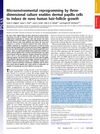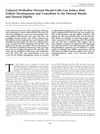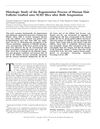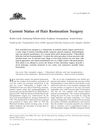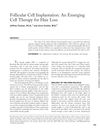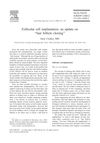Notes from the Editor Emeritus: Cell Therapy and Hair Transplant Limitations
November 2015
in “
Hair transplant forum international
”

TLDR Early attempts at using cloned cells for hair transplants failed, but 3D cell growth showed some promise.
In 2015, researchers were exploring the potential of cell therapy, or "cloning", as a solution to hair transplant limitations. The concept involved harvesting small numbers of hair follicles from the donor region, culturing dermal papilla (DP) cells in a lab, and then transferring them back to the patient's balding areas. These cells would either form new hair follicles or stimulate the transformation of a vellus hair into a terminal hair. However, early studies failed as the cells lost their ability to induce hair follicles to grow after several passages of cell cycling. Success was seen in mouse models, but these results did not translate to human trials. Research from Angela Christiano’s lab suggested that the failure was due to a decrease in the genetic function of the aggregates when human DP cells were moved from their natural 3D configuration to growth in a 2D environment. When cells were grown as 3D spheroids, partial restoration of induction occurred. Other research suggested that adipose tissue also plays a role in hair follicle growth. Despite these findings, many unknowns remained in understanding of basic dermal papilla and adipocyte cell biology and their interactions.
